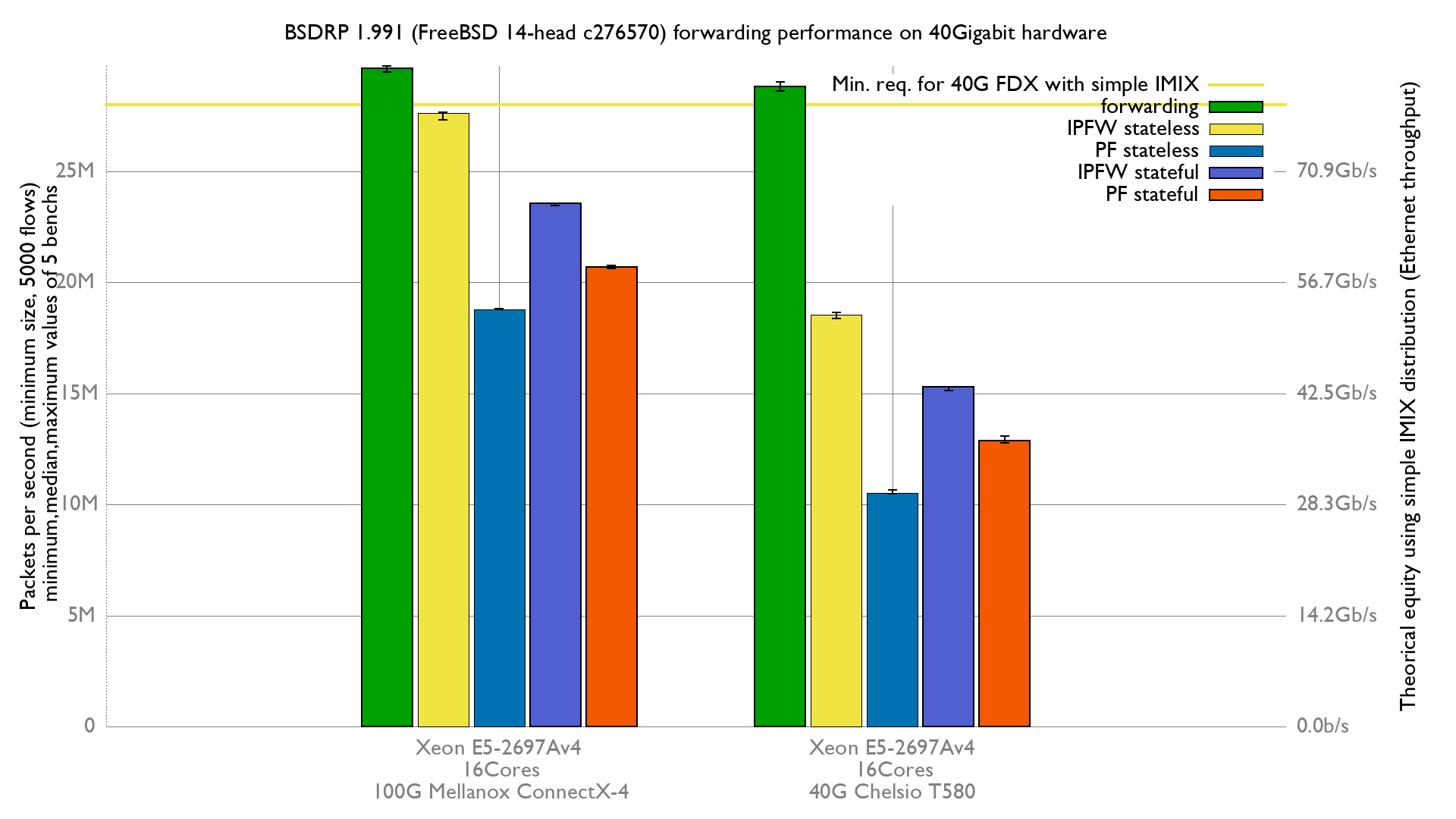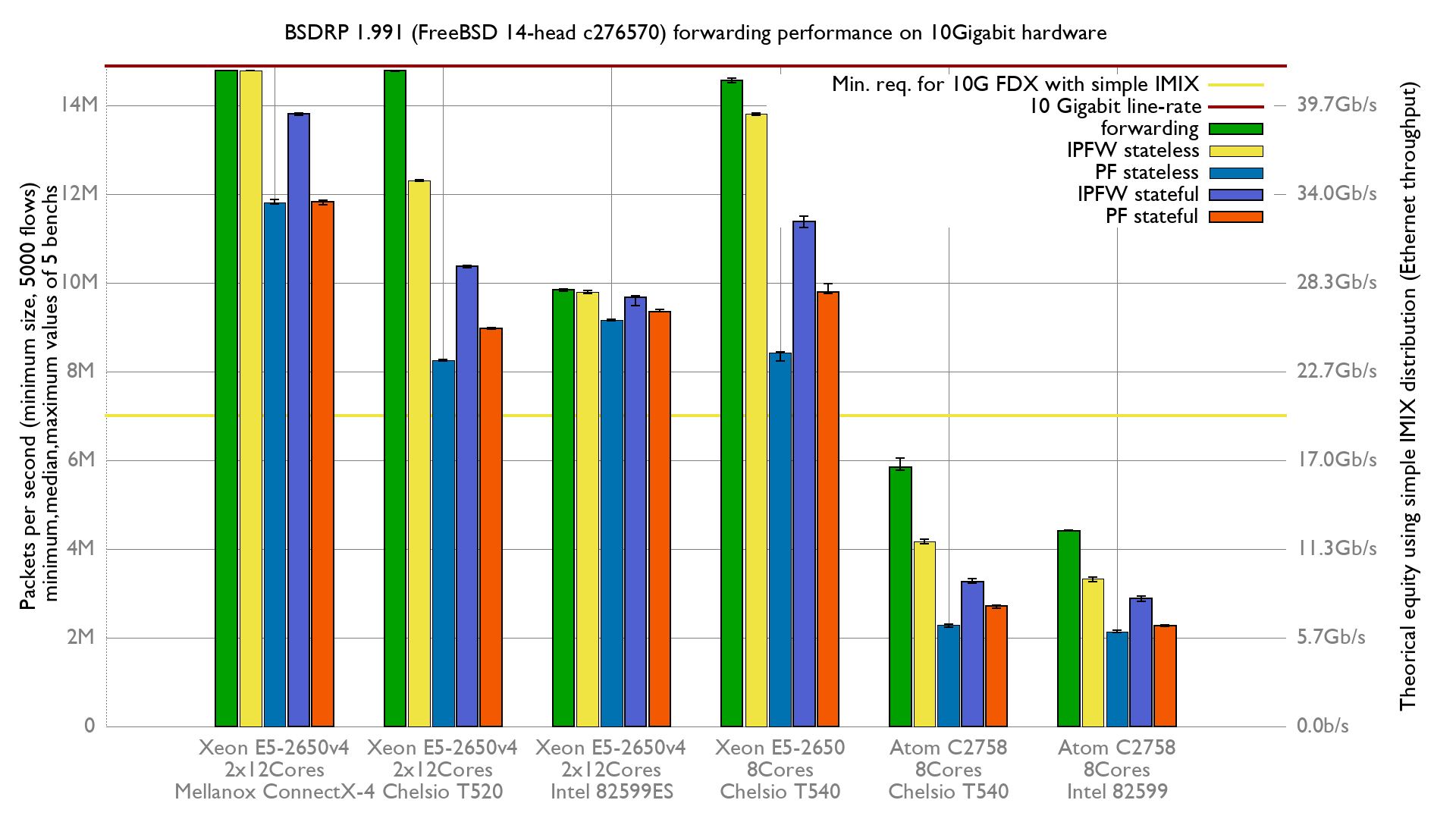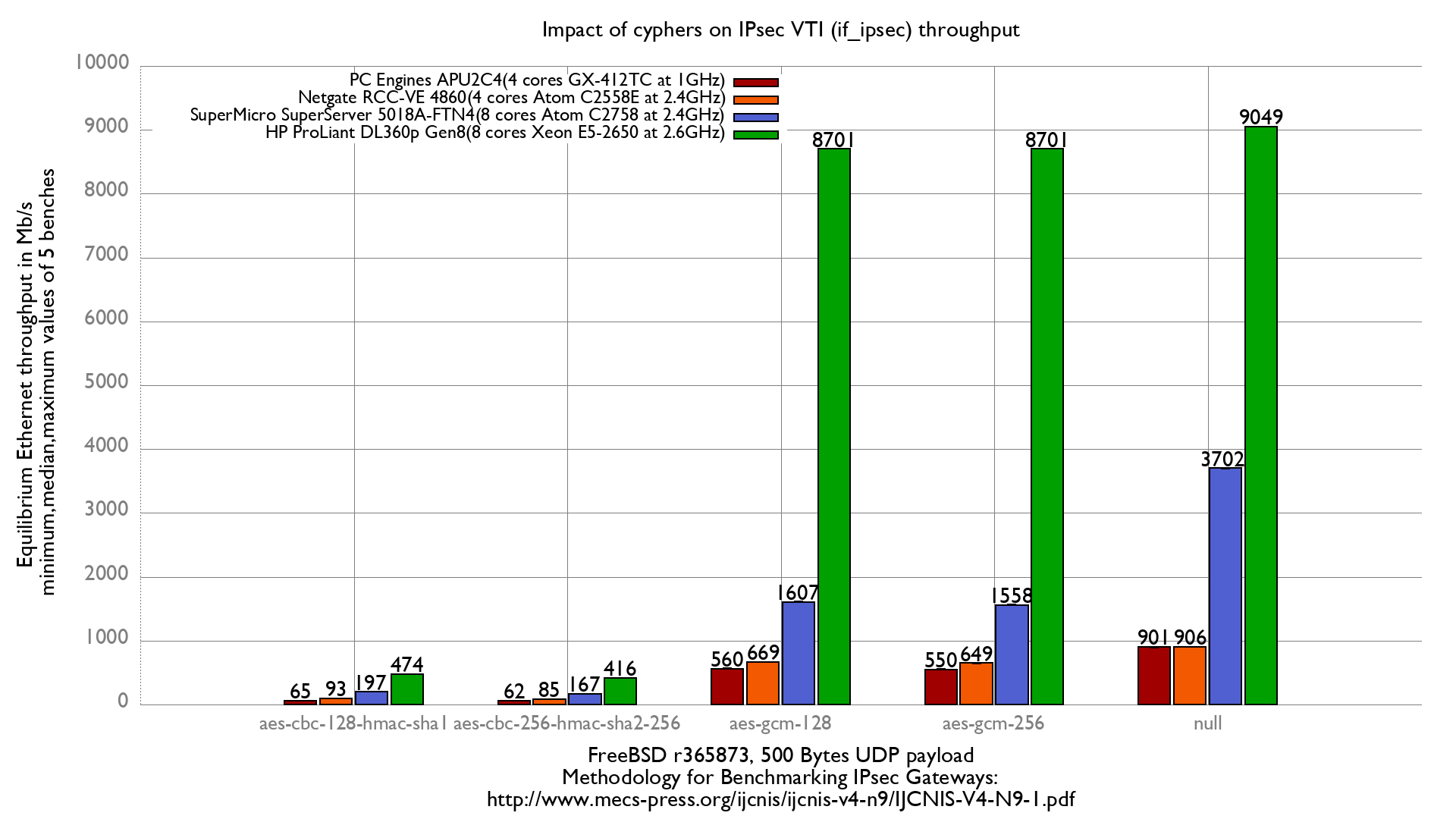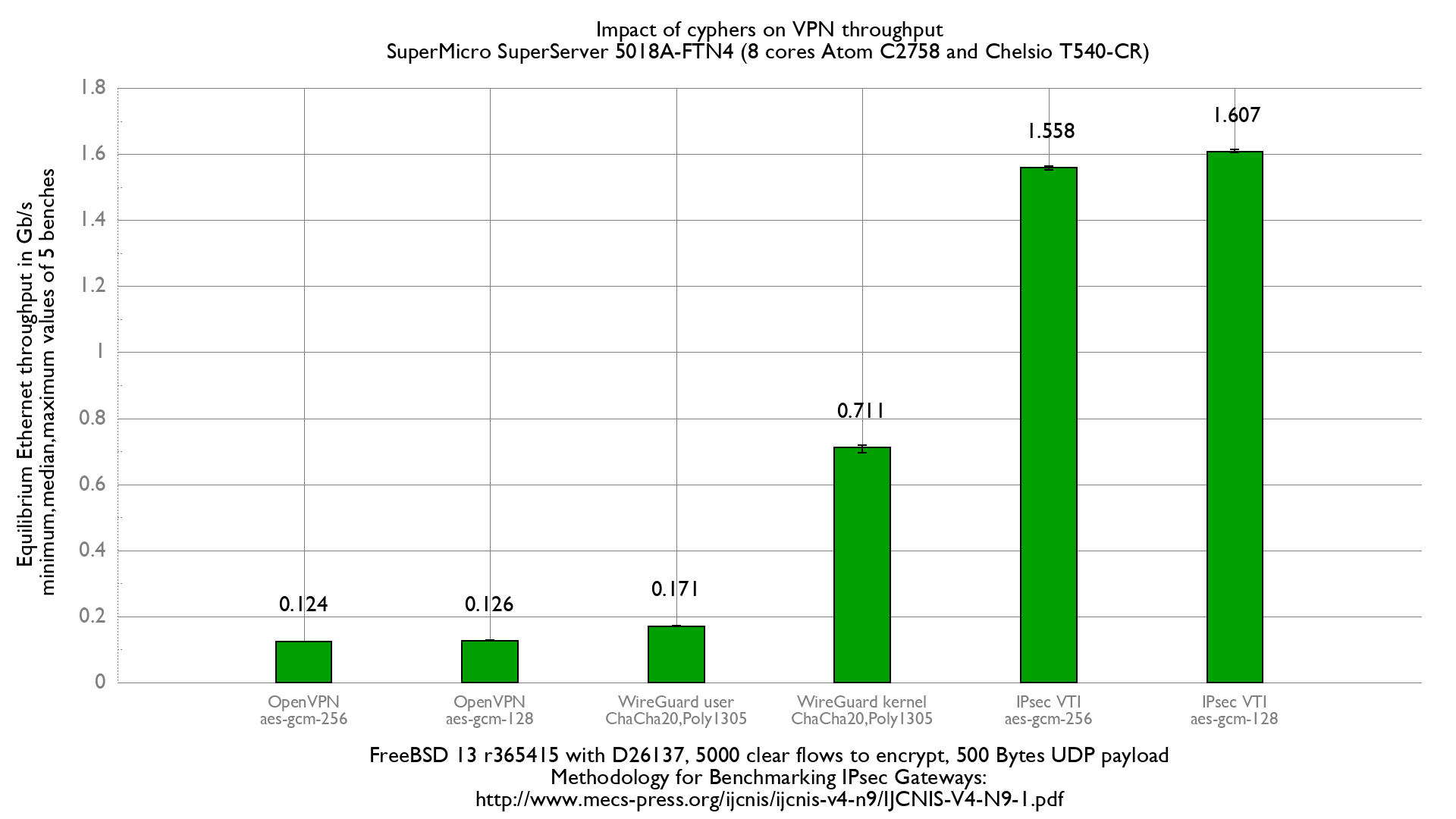documentation:faq
- en
- fr
Table of Contents
Frequently Asked Questions (FAQ)
Frequently Asked Questions
What's the difference between BSDRP and OPNsense or pfSense ?
- BSDRP doesn't have a Web GUI: It's to be configured from a CLI only (like Cisco/Juniper), or by an API (like netconf) [planned feature]
- BSDRP is not intended for home use but for company use (small ISP as example).
What's about the routing performance ?
- 4 cores Atom with with multi-queue aware NIC is the minimum for a line-rate gigabit router (1.48Mpps of smallest packet size).
- 8 core Atom not enough for the minimum for a 10Gigabit Full-Duplex (10Gbps receiving + 10Gbps transmitting = 20Gbps) with IMIX packet size distribution
- 8 core Xeon is enough for a 10Gb line-rate router (14.8Mpps)
What's about the firewall performance ?
10Gb/s hardware
40Gb/s hardware
A server designed to support 40Gb/s of bidirectional traffic could almost support IPFW in stateless mode but not pf neither ipf:

What's about IPSec performance ?
What's about different VPN performance ?
Can I install BSDRP on a MIPS or ARM device (RouterStation, D-Link, etc..) ?
BSDRP targets x86 architectures only.
ZRouter.org targets ARM and MIPS architectures.
The technical issues regarding the support of ARM/MIPS architectures with BSDRP are:
- Be able to modify the bootloader (for changing the boot-partition) from the FreeBSD user space: Permit to switch the active partition after an upgrade
- Having a bootloader that support a minimum boot-partition selection screen: Permit to revert-back to the previous version if the new installed version has major problem.
Can you add squid/apache/BitTorrent server/subversion/MySQL/etc. to BSDRP ?
All features not related to routing will not be added into the base of BSDRP (but installing or removing FreeBSD packages is still possible).
Where is the forum ?
No forum planned..
documentation/faq.txt · Last modified: 2022/07/11 11:59 by olivier




